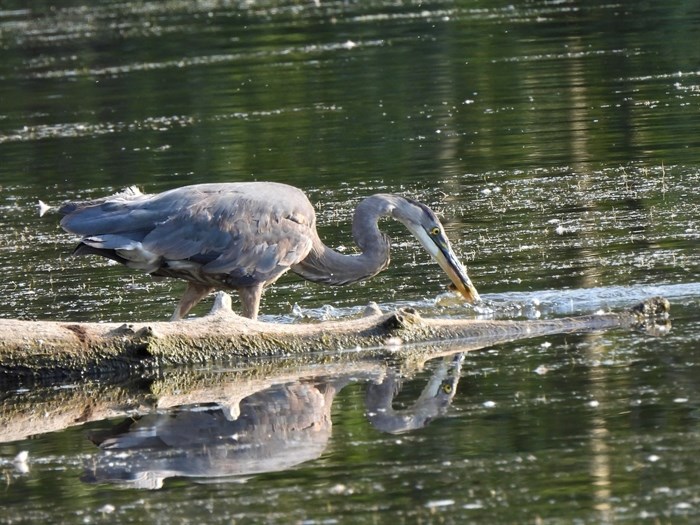Kelowna's lost wetlands and building around the ones that are left
Kelowna is known for its vineyards, orchards and beaches, but a lot of the city used to be a big swampy marsh. Now, the city is caught between conserving swampland and trying to stack more people on top of each other as the population grows.
There are 27 creeks and 278 wetlands still in the city that play a crucial role in the ecosystem, but most of the city’s swamps have been lost to skyscrapers and other developments.
University of British Columbia Okanagan’s geotechnical engineering professor Dwayne Tannant said it’s important to preserve marshland in Kelowna as the city continues its rapid growth.
“There's tremendous value in having these sorts of marshy areas,” Tannant said. “It's nice to see these attempts to try to create a balance between this pressure to have more and more people living in Kelowna and the desire to have at least some natural aspects of our environment.”
Although 85 per cent of the city’s marshlands have been lost, there have been major efforts to preserve swamps in the city. Rotary Marsh's rehabilitation cost more than $1 million 30 years ago, the equivalent of $2.1 million today.
“Our parks crews work hard to keep Rotary Marsh clean and healthy. They are responsible for litter and garbage pickup, as well as maintaining the vegetation, wood structures, trails and trees,” the city’s parks manager Blair Stewart said in a press release. “This special space is important for everyone — it’s a peaceful spot to enjoy nature and the importance of marshlands, it cleans the creek before it drains into Okanagan Lake and it’s a safe home for wildlife.”
A current example of the city trying to grow without destroying all of its natural wetlands is the former Tolko Mill site plan for the north end right next to Rotary Marsh. The plan for the area was initially rejected for numerous reasons, but the revised vision that was approved last year has acres of public space including wetland green space.
“I'm really hopeful that there's some careful thought as to how to blend urban and environmental in that same footprint,” Tannant said. “Even around KLO Middle School, some of the. . .ditches, there's an attempt to try to make them more natural and have water flowing because it supports all sorts of birds and other animals.”
He said the wetlands at the valley bottom were created by silt and sand carried by creeks like Mission Creek since the Ice Age. The soft silty soil has created numerous engineering challenges ever since the city started building taller and taller buildings.
The popular solution engineers came up with to put massive, heavy buildings on soft soil is to drive massive piles deep into the ground or leave mountains of dirt in place for years so they can squeeze the moisture out of the ground and make it harder, he said.
William R. Bennett bridge’s construction was another challenge engineers had to figure out, and the solution was to make it float in some sections, and even use styrofoam blocks to reduce soil settlement on the west embankment.
While there are methods to engineer developments on former wetlands with soft soil, the city has seen its fair share of projects that haven’t fully accounted for soil density.
Some developments like the Discovery Bay Towers and the UBCO downtown tower project didn’t properly account for the soft ground and ran into costly soil settling issues that landed both projects in court.
A B.C. Supreme Court ruling said the city revoked its occupancy permit on Oct. 19, 2005 and didn’t reinstate it until Dec. 6, 2007. The UBCO case with the residents of Hadgraft Wilson Place is ongoing.
Tannant said he hopes to see more city planning that blends preservation of wetlands with clever engineering solutions.
“Since I've lived here, it has transitioned from a town to a city and they decided to go vertical,” he said. “As a person living in a city, you love to walk down these trails and pass these waterways and parks."
To contact a reporter for this story, email Jesse Tomas or call 250-488-3065 or email the editor. You can also submit photos, videos or news tips to the newsroom and be entered to win a monthly prize draw. Find our Journalism Ethics policy here.
We welcome your comments and opinions on our stories but play nice. We won't censor or delete comments unless they contain off-topic statements or links, unnecessary vulgarity, false facts, spam or obviously fake profiles. If you have any concerns about what you see in comments, email the editor in the link above. SUBSCRIBE to our awesome newsletter here.




